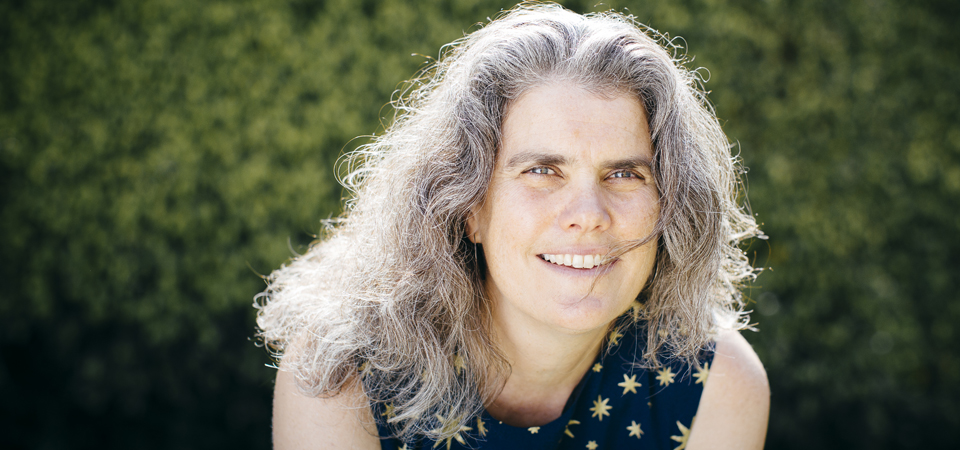About Andrea Ghez
Andrea M. Ghez, professor of Physics & Astronomy and Lauren B. Leichtman & Arthur E. Levine chair in Astrophysics, is one of the world’s leading experts in observational astrophysics and heads UCLA’s Galactic Center Group. Best known for her ground-breaking work on the center of our Galaxy, which has led to the best evidence to date for the existence of supermassive black holes, she has received numerous honors and awards including the Nobel Prize in 2020, she became the fourth woman to be awarded the Nobel Prize in Physics, sharing one half of the prize with Reinhard Genzel (the other half of the prize being awarded to Roger Penrose). The Nobel Prize was awarded to Ghez and Genzel for their Independent discovery of a supermassive compact object, now generally recognized to be a black hole, in the Milky Way's galactic center, the Crafoord Prize in Astronomy from the Royal Swedish Academy of Science (she is the first woman to receive a Crafoord prize in any field), Bakerian Medal from the Royal Society of London, a MacArthur Fellowship, election to the National Academy of Sciences, the American Academy of Arts & Sciences, and the American Philosophical Society.
Her work on the orbits of stars at the center of the Milky Way has opened a new approach to studying black holes and her group is currently focused on using this approach to understand the physics of gravity near a black hole and the role that black holes plays in the formation and evolution of galaxies.
Advances in high resolution imaging technology enabled Ghez’s work and her group continues to work on pushing the frontiers of these technologies forward. She serves on several leadership committees for the W. M. Keck Observatory, which hosts the largest telescopes in the world, and the future Thirty Meter Telescope.
Ghez is also very committed to the communication of science to the general public and inspiring young girls into science. Her work can be found in many public outlets including TED, NOVA’s Monster of the Milky Way, Discovery’s Swallowed by a Black Hole, TED, and Griffith Observatory.
Ghez earned her B.S from MIT in 1987, and her PhD from Caltech in 1992 and has been on the faculty at UCLA since 1994.
From Scientific American
By Hilton Lewis, Director of W.M. Keck Observatory on October 8, 2020
Standing in my office 25 years ago was an unknown, newly minted astronomer with a half-smile on her face. She had come with an outrageous request—really a demand—that my team modify our exhaustively tested software to make one of our most important and in-demand scientific instruments do something it had never been designed for and risk breaking it.

All to carry out an experiment that was basically a waste of time and couldn’t be done—to prove that a massive black hole lurked at the center of our Milky Way.
My initial "no way" (perhaps I used a stronger expression) gradually gave way in the face of her cheerful but unwavering determination. It was my first encounter with a force of nature, Andrea Ghez, one of three winners of the 2020 Nobel Prize in Physics, for her work on providing the conclusive experimental evidence of a supermassive black hole with the mass of four million suns residing at the center of the Milky Way galaxy.
That determination and the willingness to take calculated risks have always characterized Andrea. For 25 years she has focused almost exclusively on Sagittarius A*—the name of our own local supermassive black hole. It is remarkable that an entire field of study has grown up in the intervening quarter century—of searching for and finding evidence of these monsters thought to lie at the heart of every large galaxy. And Andrea is without question one of the great pioneers in this search.
From Andrea GhezTo me, it’s always been very important to encourage young women into the sciences, so to me the Nobel Prize means an opportunity and a responsibility to encourage the next generation of scientists who are passionate about this kind of work into the field. It’s important to have role models.
I think seeing people who look like you, or people who are different, succeeding shows you that there’s an opportunity there, that you can do it, that this is a field that is open to you. It’s often hard to do things that are different, and if you’re already different there’s an opportunity as long as you have the confidence to do things that are indeed different. I’ve been fortunate to have parents, teachers and mentors who have been incredibly supportive of my interests.
At every stage, someone has always said no, you can’t do this because you’re a girl. I got very used to ignoring when people said I couldn’t do something. There were times when people didn’t believe our approaches would work. I was pretty well trained by then to believe in myself.

